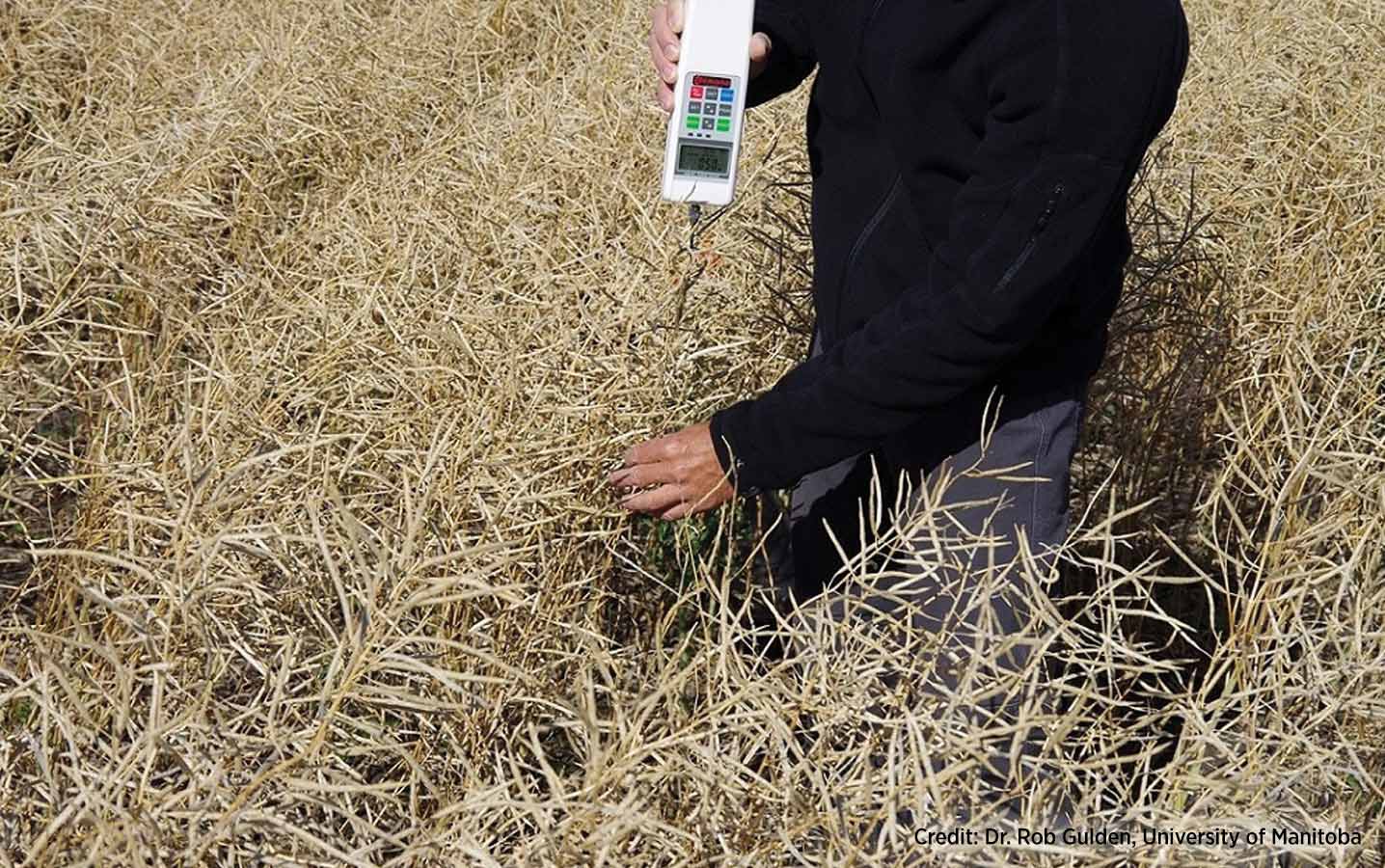Investigation into pod drop and pod retention resistance
Key result: Seed losses at harvest can be significant. This study provides insight into pod drop and the factors impacting it. The pod retention measurement method developed and validated in this study can be used in future studies. Results from this study also suggest that pod retention is a heritable trait and could be exploited by breeders to reduce seed losses.
Project title, Principal investigator: “Developing a rapid method to evaluate pod-drop in canola,” Rob Gulden, University of Manitoba
Funding: Alberta Canola, SaskCanola, MCGA, GF2
Seed losses before and at harvest are due to pod shatter and pod drop, and they could be more substantial than expected. Pod shatter is when the siliques (pods) open up while still attached to the plant. Pod drop is when the whole silique breaks off and falls to the ground. They both result in seed losses.
Pod drop is difficult to measure and less research has been done on it, so there was a need for more understanding on this topic. Before pod drop could be accurately examined, this project aimed to develop an accurate pod drop measuring method.
More specifically, the project objectives were to determine the details (number of measurements and rachis type and position) needed to collect meaningful pod-retention resistance measurements and then to use the developed method to create and validate a relationship between pod-retention resistance and pod drop across several varieties and a range in environments.
For the method development part of the study, two years of field studies (2013 and 2014) were carried out in Carman, Man., and Saskatoon, Sask. Two seeding dates were used for the Carman location and one seeding date was used in Saskatoon for each year of the study, but the early-seeded trial was cancelled in 2013 due to a late-season hail and in 2014 due to a sclerotinia outbreak (likely influenced by high precipitation early in the season). The relationship validation part of the project utilized the Canola Performance Trials and was carried out in 2014 (at Carman, Man., and Outlook, Sask.) and 2015 (at Thornhill and Elm Creek, Man., and in Saskatoon, Wakaw and Melfort, Sask.).
In 2013 and 2014, six canola varieties (73-15RR, 73-45RR, 74-44BL, 74-54RR, and InVigor L130, InVigor L140P) were grown at two different target densities (120 and 30 plants/m2). This was done in order to see if pod-retention resistance was affected by phenotypic plasticity (i.e. increased branching).
Results
While working on the method development, it was noted that about 12-15 pod-retention resistance (PRR) measurements per rachis type or rachis position were necessary to minimize the variation within treatment and to provide a fairly accurate estimate of PRR. (A rachis is the stem holding the cluster of pods.)
It was determined that there was a clear relationship between weight-adjusted (specific) pod-retention resistance and absolute pod drop.
Canola genotypes with low pod drop (and therefore lower seed losses from pod drop) required greater force per gram to dislodge their pods than those with high pod drop (and therefore greater seed losses from pod drop).
While many parameters contributed to the variation in pod drop results (location, rachis position and genotype), they were not ranked in the same order of importance as the parameters affecting pod-retention
resistance (rachis position, cultivar and location). However, there was a very significant relationship between pod drop and weight-adjusted pod-retention resistance.
Although the findings suggest that pedicel attachment strength may affect pod drop, further research is needed on this subject. (A pedicel is the little stem that attaches individual pods to the rachis.) Such future studies could include examining how environmental factors during seed maturation contribute to pod drop and understanding the relationship between plasticity in pod size and pod-retention resistance.
Finally, these results imply that (after environment and position on the plant) heritability is another major contributor to pod drop, which could be utilized by breeders to help growers reduce canola harvest losses.





